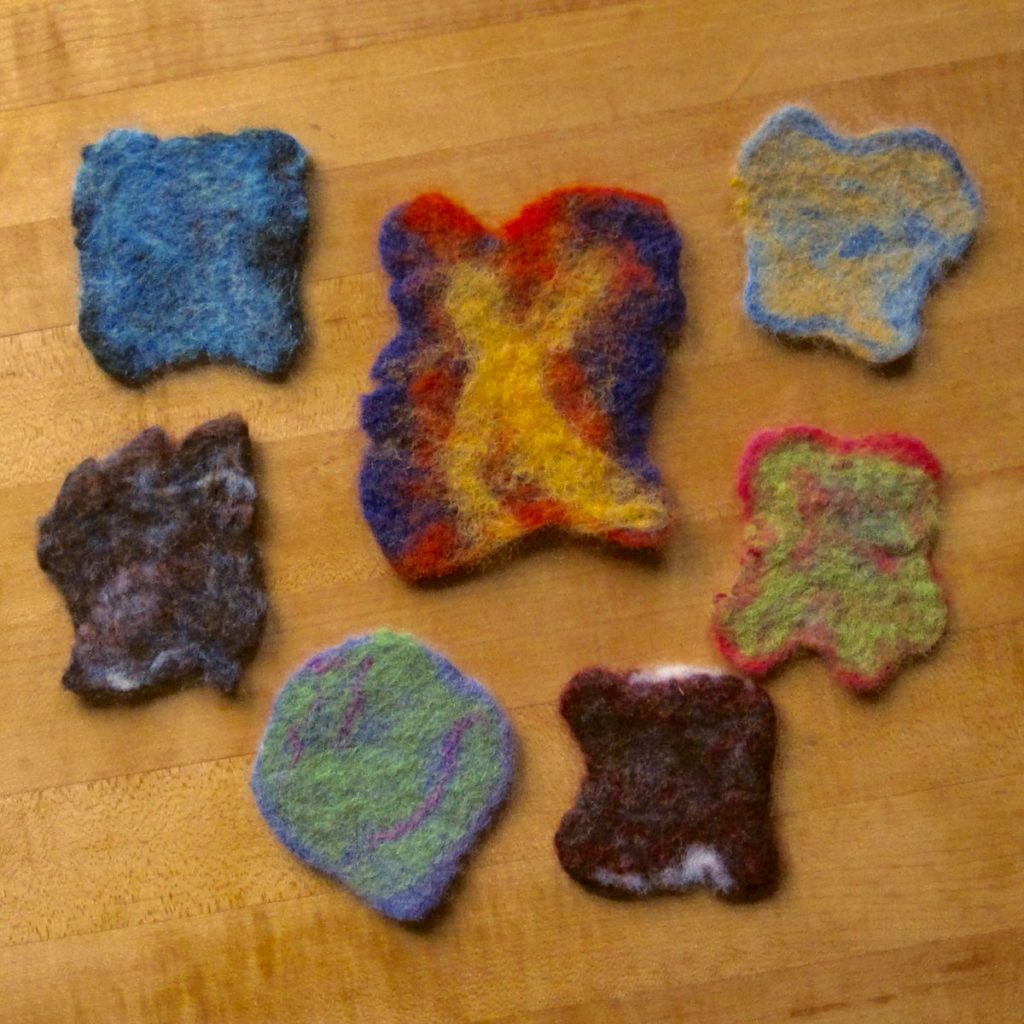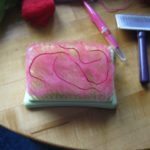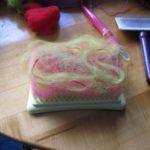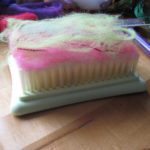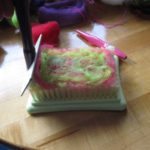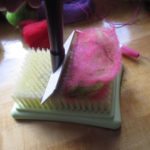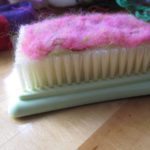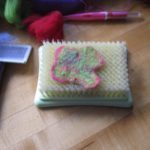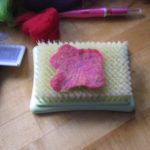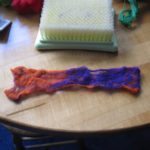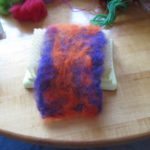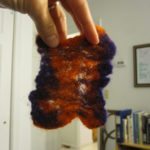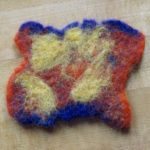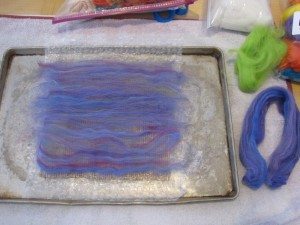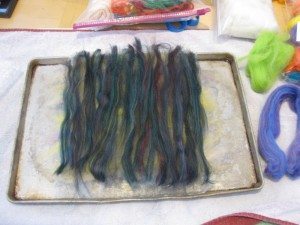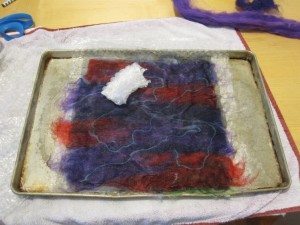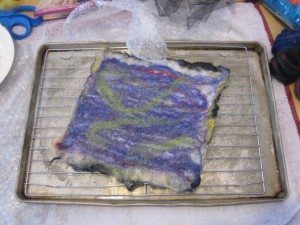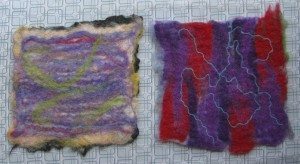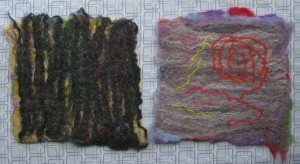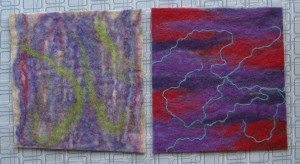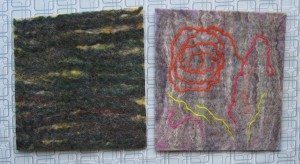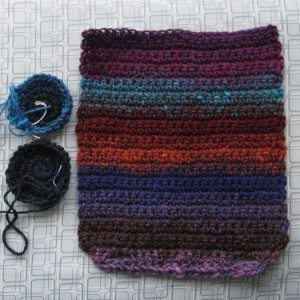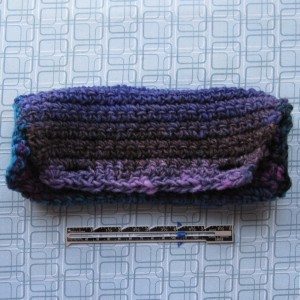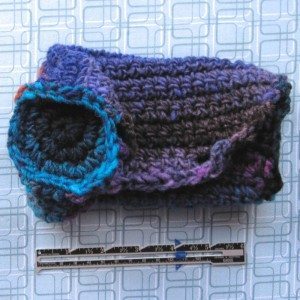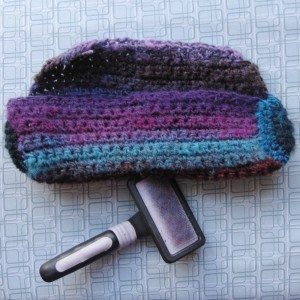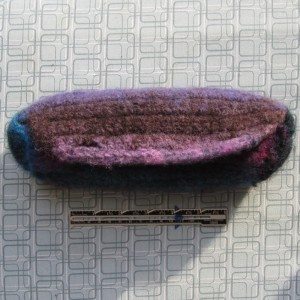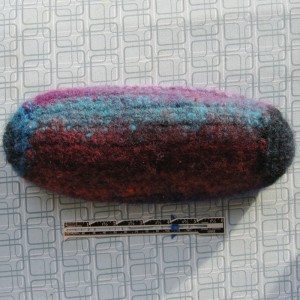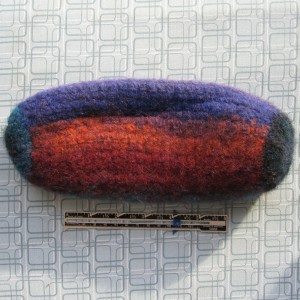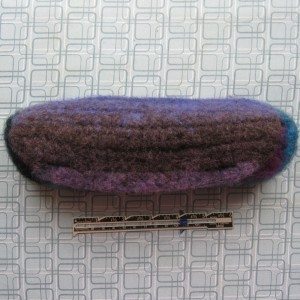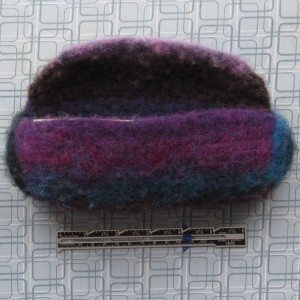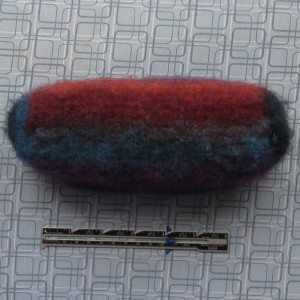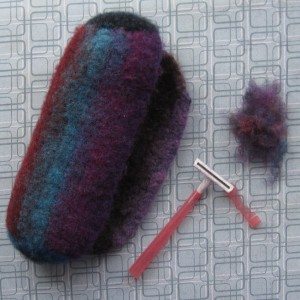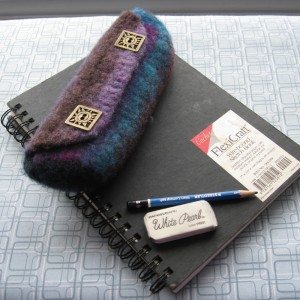I made half a dozen little patches of felt this week, plus one larger one (and one failed even larger one). Turns out it’s super-quick to make felt if it’s small enough to fit on your palm.
The idea: Lay some fleece out on a needle-felting brush, needle it until it can be transported without coming apart (5 minutes if you’re being careful, with flips), take it to the sink, soak it, rub it between your soapy hands for another 5 minutes (also with flips) and rinse – done.
For all of the smaller patches the fleece barely overhung the felting brush. My goal was thinner pieces of felt than the last time I made felt; those were too thick to expect to keep needles in. To that end I used thinner layers of fleece, which also meant they were somewhat irregular. I stuck some crewel yarn in several of them; in the photos it’s between layers but it can also be on top – just hold the ends down with your fingers while you needle-felt the middle until it’s stuck, and then needle-felt the ends until they’re stuck too. It takes a little more care than just fleece but it isn’t fussy. If you put it in between it may or may not show well.
To flip it helps to have a cat brush that you can get underneath the fleece through the felting brush bristles. I also tried to needle in the edges in particular so they wouldn’t get thin in the wet-felting step. You can see in the third picture below that the size has already decreased quite a bit.
I don’t have photos of the wet-felting step, but it’s straightforward: run warm water, soap up your hands (I tried glycerin hand soap and liquid dish soap and would recommend the dish soap), wet the fleece, and rub it between your hands – gently at first and then more vigorously when the patch shrinks enough to fit entirely between your hands. Flip and rotate it so you hit it from multiple angles. The patch will not be a regular square and I saw no way to influence the shape – it probably depends on what parts of the fleece patch were thicker to begin with.
The first time I tried to make a larger patch it was simply long – and not just that, long in what was already the long direction of the brush. I believe I did not make the fleece thick enough, but it was also quite difficult to wet felt because of how much larger than my hands it was. You can see in the photo below that it really didn’t come together at all.
The more successful larger patch overhung the felting brush some on all sides, for a total that was a bit smaller than the failed one. It had to be needled in sections: first the middle, then in thirds from end to end. The wet-felting was slower but the same idea. Unfortunately I ended up with some gaps in the finished felt (this happened to a much lesser extent with a couple of the smaller patches), so I needled some additional fleece over them and performed a second wet-felting.
You’ll see most of these patches again in upcoming projects. I’ve been crafting steadily; it’s mostly been on things that wouldn’t be interesting blog posts, but there are a couple more photogenic projects in the pipeline!
